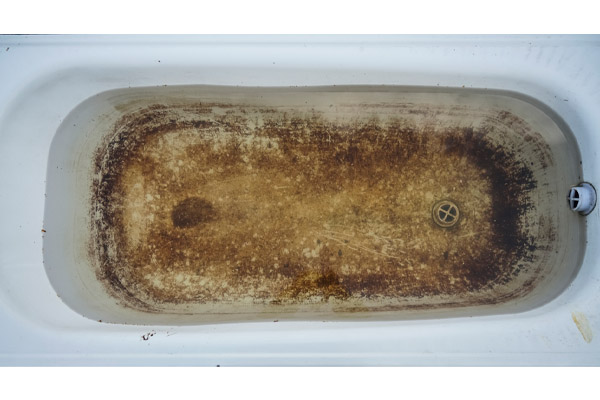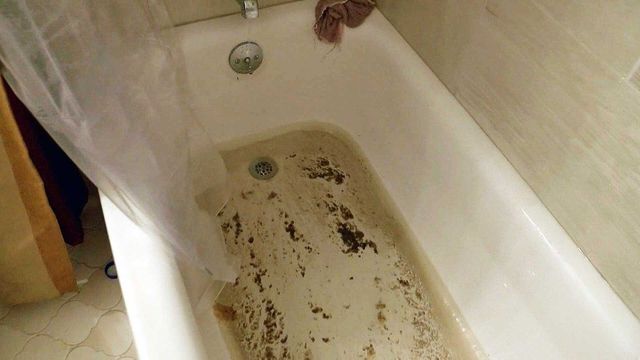Examining Why Sewage Comes Up Through the Bathtub
Examining Why Sewage Comes Up Through the Bathtub
Blog Article
How do you really feel on the subject of What to Do if Sewage Starts Coming Up Through Your Bathtub?

Sewer back-up in the tub can be a stressful and unhygienic issue for any type of homeowner. Not only is it bothersome, yet it also presents significant health and wellness dangers and shows underlying issues with the plumbing system. Understanding why sewer is coming up through the tub is important for taking suitable activity to attend to the issue properly.
Introduction to the Issue
Comprehending the Problem
When sewer starts backing up right into the bath tub, it's a clear sign of a problem with the drainage system. The wastewater that ought to be streaming far from your home is instead discovering its back right into your living space, which can bring about considerable damage and health hazards.
Possible Causes
A number of elements can contribute to sewer backup in the tub. From clogs in the sewage system line to problems with the plumbing facilities, determining the origin is crucial for locating an option.
Common Factors for Sewage Back-up
Blockages in the Sewage System Line
One of one of the most common reasons for sewer backup is a clog in the sewage system line. This can take place due to the build-up of particles, grease, or international items in the pipelines, preventing correct circulation and triggering sewer to back up right into your bath tub.
Tree Origin Intrusion
Tree roots looking for moisture and nutrients can penetrate drain lines with little splits or joints. Over time, these origins can grow and broaden, creating considerable damages to the pipelines and causing sewer back-up problems.
Aging Infrastructure
Older homes might have outdated plumbing systems that are extra susceptible to deterioration, cracks, and deterioration. As pipes age, they end up being more vulnerable to leaks and obstructions, enhancing the possibility of sewage back-up cases.
Heavy Rainfall or Flooding
Throughout periods of heavy rainfall or flooding, the sewer system may become overwhelmed with excess water, creating backups and overflows. This can result in sewage supporting into tubs and various other fixtures inside the home.
Health And Wellness Threats Related To Sewer Backup
Contamination of Water System
Sewage back-up can contaminate the water supply in your home, presenting a significant health and wellness danger to you and your household. Direct exposure to infected water can cause gastrointestinal concerns, skin infections, and various other health problems.
Spread of Condition
Sewer includes unsafe microorganisms, viruses, and bloodsuckers that can trigger a range of illness, including liver disease, cholera, and gastroenteritis. Entering into contact with sewer or contaminated surface areas places you in danger of infection.
Mold and mildew Development
Wetness from sewer back-up can produce ideal conditions for mold and mildew growth in your house. Mold and mildew spores can exacerbate respiratory system troubles and cause allergies in sensitive people, making prompt cleanup important.
Indications of Sewer Back-up
Foul Odors
Undesirable smells emanating from drains or components, particularly in the bathroom, may indicate sewer backup concerns. These smells are often strong and relentless, signifying an issue that needs immediate attention.
Slow Draining Fixtures
Bathtubs, sinks, and toilets that drain pipes gradually or not in all could be experiencing sewer backup. If several fixtures are impacted at the same time, it's likely that the issue stems from a common factor, such as the major sewage system line.
Gurgling Noises
Weird gurgling or bubbling noises originating from drains pipes when water is running elsewhere in your home are a measure of air caught in the plumbing system. This air accumulation can result from sewage back-up and ought to be explored without delay.
Immediate Actions to Take
Shutting Off Water
In case of sewage backup, it's necessary to turn off the water to prevent further contamination and damage. Situate the main water shutoff valve in your home and shut it off until the concern can be solved.
Speaking To a Specialist Plumber
Dealing with sewage backup is not a DIY job. Contact a licensed plumber with experience in handling sewage-related concerns to analyze the situation and do needed repair work or cleanups.
Staying Clear Of Contact with Polluted Water
Till the sewer backup is settled, stay clear of contact with contaminated water to avoid the spread of microorganisms and virus. Put on safety gear if you must remain in the damaged area and clean your hands thoroughly later.
Safety nets
Routine Maintenance of Drain Lines
Arrange regular assessments and upkeep of your sewage system lines to identify and attend to potential issues prior to they rise right into major problems. This can include clearing out particles, inspecting for tree root breach, and repairing any damaged pipes.
Installing Backwater Valves
Take into consideration setting up bayou valves in your plumbing system to prevent sewage from receding right into your home throughout durations of heavy rainfall or flooding. These valves immediately close when water draws back up, protecting your building from contamination.
Appropriate Disposal of Home Waste
Avoid purging anything apart from toilet paper and human waste down the toilet to prevent blockages and blockages in the sewer line. Dispose of grease, oil, and other family chemicals effectively to decrease the threat of plumbing problems.
Tidying up After Sewage Back-up
Disinfection Procedures
Completely decontaminate and sanitize impacted areas after sewage backup to remove unsafe germs and prevent mold development. Usage proper cleaning items and safety equipment to guarantee secure and efficient cleanup.
Restoration of Affected Locations
Repair any damage to flooring, wall surfaces, or fixtures brought on by sewer backup. Depending upon the extent of the damages, you might require to replace carpeting, drywall, or various other products to restore your home to its pre-loss condition.
Why Is Water Backing Up in My Bathtub When I Flush My Toilet?
What to do about a sewer line clog
First, don’t bother with plunging. No amount of plunging will dislodge the clog in a sewer line. The clog is too far away. Plungers are for clogs in the toilet itself, not the sewer line. Plus, the most likely causes of a sewer clog are:
Tree roots Flushed toys or feminine products Grease buildup Those items don’t move easily. And in the case of tree roots, the roots need to be cut out of the pipe and the pipe will need to be repaired.
You’ll need a closet auger. A closet auger is a type of plumber’s snake with a protective cover to keep from scratching the delicate porcelain toilet. If the clog is further down, you may need to remove the toilet or use one of your cleanouts to get to the clog.
We also recommend doing a video inspection of the drain to ensure that the cause of the clog has been completely removed. Otherwise, you could have the same problem again in a few days or weeks.
https://mspplumbingheatingair.com/blog/why-is-water-backing-up-in-my-bathtub-when-i-flush-my-toilet

I ran across that review on Why sewage is coming up through your bathtub while doing a search on the internet. Remember to pause to share this blog posting if you liked it. I cherish reading our article about Why is Sewage Backing Up Into My Bathtub?.
Click Here
Report this page